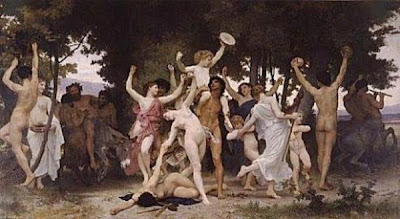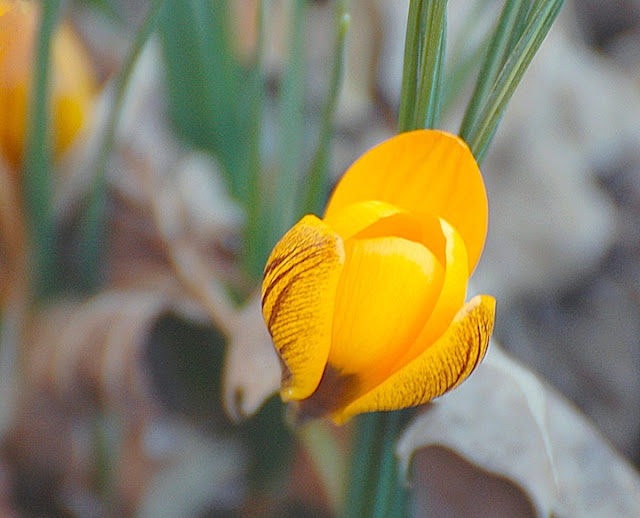Today is my mother's birthday. She was born in 1911 on a farm in the hills of eastern Kentucky, the fourth of seven children. Mom passed away in the summer of 2005; had she lived these six-and-a-half years, she would be 101 years old today—not out of the question given her Williams bloodline, many of whom made it well past the century mark. As it was, with her medical history, it was only by God's grace, good doctors, and sheer force of an incredible will that she survived past her mid-40s.
That's one of the things Mom taught me, to never give up no matter what—that life is to be lived and appreciated, made the best of, and yes, enjoyed, in spite of pain and suffering, troubles, heartbreak, tragedy. Mom was one of God's joyful singers, who never got up a day in her life without a song in her heart…a song which soon made it to her lips.
Countless times over the years, the first sound I heard on awakening was my mother's voice coming from the kitchen, which was located on the opposite corner of the house from my bedroom. Mom would be singing while she stirred up a pan of biscuits to go with breakfast, or she might be doing the dishes, or waiting for her coffee to perk. Mom sang when she hung wash on the lines in the back yard or worked in her many flowers. She sang when she swept the hall, vacuumed carpets, mopped the kitchen and bathroom floors, or ironed clothes. Often, when she was taking a short break to rest a few minutes in the old metal glider on the front porch, she would sing. And when she really got inspired—at least once or twice a week—she went into the guest bedroom and spent a half-hour or so accompanying herself on the ornate, ceiling-high pump organ which she'd learned to play as a little girl.
Mostly Mom sang hymns and gospel songs, which is what she and my father performed together on various radio shows over the years. But sometimes at home, especially when she was at the organ, Mom would get out her thick book of ballads, their lyrics hand-copied or typed, and sing some of the old tunes popular in her growing up, though much of it was the truly ancient music of the Appalachian hills by way of the English and Irish who settled the land, and traceable across the Atlantic and back centuries. At church or when doing radio programs, Mom played her guitar—one of two guitars Dad built. Guitars which were not only lovely and exquisitely crafted, but of tonal quality good enough that the great Merle Travis played one or the other on his show whenever my parents were in the WLW studios in Cincinnati.
Mom also instilled in me my love of books—thanks, in part, to my own early medical issues, chiefly chronic and very serious asthma and related bronchial problems. I'm told Mom began reading to me practically at birth. She read hours at a stretch. I learned to read, not in school, but sitting beside my mother in the big, padded living-room rocking chair—listening to her voice and watching the strings of letters on the pages of the book she held in her lap. Well before kindergarten age, those letters had become recognizable as words.
Because I was housebound for much of my early life, reading was my only escape. Every week, Mom would board the electric trolly, whose route and overhead lines passed by the end of the street, and ride six miles to the big library downtown. There she would fill two shopping bags with books and return home. She did this for years.
It is through Mom that I regularly recognize the way I look and experience so many things. Dad was logical, practical, college educated and grounded; an intellectual force and steady as a rock. Mom was emotional, filled with fun and life and no small amount of mischief. She loved flowers and birds, trees and leaves and seasons, old tales, sea shells, practical jokes…family. And work. Mom truly loved working, being busy. And she loved giving and sharing and caring. Not that my father didn't, or wasn't the kindest, most generous man I've even known; but Mom is the one who'd bake a pie for a neighbor on a whim, or sit by the bedside of whoever was sick. She would feed stray dogs and cats, and the occasional hobo. Mom simply loved to feed folks—and once fed, they were apt to return for a repeat on a regular basis.
Mom lived and loved from her heart, with all her heart.
I miss my mother—especially today, on her birthday, though there's not a day goes by when I don't think about her and wish we could sit on the deck together, watch the river and birds, tell some of the old stories once again. I'd like to serve her a slice of my cornbread, see what she thought of it in comparison to hers. And I'd give her chocolate. I don't believe anyone has ever loved chocolate more than Mom…not even me.
I wish I could hear my mother sing again. And pray herself to sleep every night. I miss those songs and prayers more than I can say.
Mom's favorite bird was the cardinal—though she always called them redbirds. Mom was a lot of things, but she wasn't fancy. So here's a redbird for you Mom. Happy birthday. I love you with all my heart.
———————




















